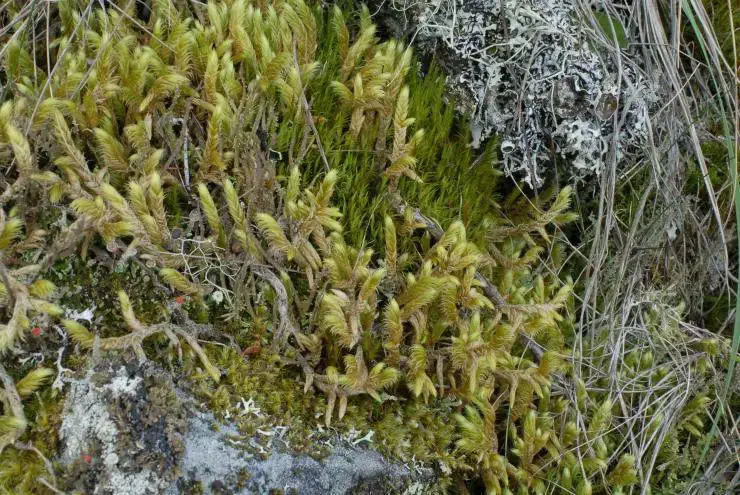
6c5f833e4a87d67b0532ff05e581dbac.jpg from: https://openmuseum.tw/muse/digi_object/c042054f370bfcfd0c8ddff5f5f9b1ca
Rhynchostegium glaucovirescens: The Fascinating Moss of the Brachytheciaceae Family
Introduction
The world of mosses is full of fascinating and unique species that play important roles in ecosystems around the globe. One particularly interesting moss is Rhynchostegium glaucovirescens (Müll.Hal.) Kindb., also known simply as Rhynchostegium. This moss belongs to the Brachytheciaceae family and has some remarkable characteristics. In this blog post, we’ll take a deep dive into Rhynchostegium glaucovirescens and explore its morphology, global distribution, habitat, ecological roles, and adaptations. Get ready to be amazed by this tiny but mighty plant!

3382-l-1.jpg from: https://www.wildflowers.co.il/hebrew/picture.asp?ID=21549
Background on Mosses
Before we jump into the specifics of Rhynchostegium glaucovirescens, let’s briefly review what mosses are. Mosses are small, non-vascular plants that belong to the division Bryophyta. They lack true roots, stems, and leaves, but instead have leaf-like structures called phyllids. Mosses reproduce via spores rather than seeds and require water for sexual reproduction. There are over 12,000 species of moss worldwide, making them the second largest group of land plants after flowering plants.

3382-l.jpg from: https://www.wildflowers.co.il/hebrew/picture.asp?ID=21548
Morphology and Identification
Rhynchostegium glaucovirescens is a pleurocarpous moss, meaning its sporophytes (spore-producing structures) grow laterally from the sides of the stems. The shoots are creeping to ascending and irregularly branched. The stem and branch leaves are ovate-lanceolate and gradually narrowed to an acuminate tip.
One of the most distinctive features of R. glaucovirescens is its glaucous blue-green color, which is where it gets its species name “glaucovirescens”. Under a microscope, you can see that the leaf cells are elongated and the costa (midrib) extends about 3/4 the length of the leaf. The seta (stalk bearing the capsule) is reddish and slightly roughened. Capsules are inclined to horizontal and curved.
Global Distribution and Habitat
Rhynchostegium glaucovirescens has a widespread distribution, being found in Europe, Asia, Africa, and the Americas. In North America, it ranges from Alaska to Mexico and the Caribbean. This moss is most commonly found growing on rocks, tree bases, logs, and soil in moist forests from lowlands to mountains. It prefers shaded habitats and is often found near streams or other water sources.
Ecological Roles and Adaptations
Like other mosses, Rhynchostegium glaucovirescens plays several important roles in the ecosystems where it grows:
Nutrient cycling: Mosses help capture and retain nutrients that might otherwise be lost from the soil. As mosses decompose, they release these nutrients back into the ecosystem.
Moisture retention: The dense mats formed by mosses help retain moisture in the soil, reducing erosion and creating favorable microhabitats for other organisms.
Carbon sequestration: Mosses are important carbon sinks, absorbing CO2 from the atmosphere and storing it in their tissues and the soil.
Habitat creation: Mosses provide shelter and habitat for numerous small invertebrates, which in turn support the rest of the food web.
Rhynchostegium glaucovirescens has several adaptations that allow it to thrive in its preferred habitats:
Tolerance of shade: The blue-green color of R. glaucovirescens comes from its high concentration of chlorophyll b, an accessory pigment that enhances light absorption in shaded conditions.
Moisture retention: Like other mosses, R. glaucovirescens can absorb and retain water from its surroundings, allowing it to stay hydrated even when conditions are dry.
Asexual reproduction: In addition to sexual reproduction via spores, R. glaucovirescens can also reproduce asexually through fragmentation. Broken-off pieces of the moss can regenerate into new individuals.
Technical Table
| Characteristic | Description |
|---|---|
| Division | Bryophyta |
| Class | Bryopsida |
| Order | Hypnales |
| Family | Brachytheciaceae |
| Genus | Rhynchostegium |
| Species | R. glaucovirescens |
| Leaf shape | Ovate-lanceolate |
| Leaf tip | Acuminate |
| Costa length | 3/4 leaf length |
| Seta | Reddish, slightly roughened |
| Capsule | Inclined to horizontal, curved |
Conclusion
Rhynchostegium glaucovirescens may be small, but it is a remarkable moss with a fascinating biology and important ecological roles. Its unique blue-green color, widespread distribution, and adaptations to shaded, moist habitats make it a standout species in the Brachytheciaceae family.
Next time you’re out for a hike in the woods, keep an eye out for this beautiful moss and take a moment to appreciate the complex world of bryophytes beneath your feet. What other secrets might these tiny plants be hiding?